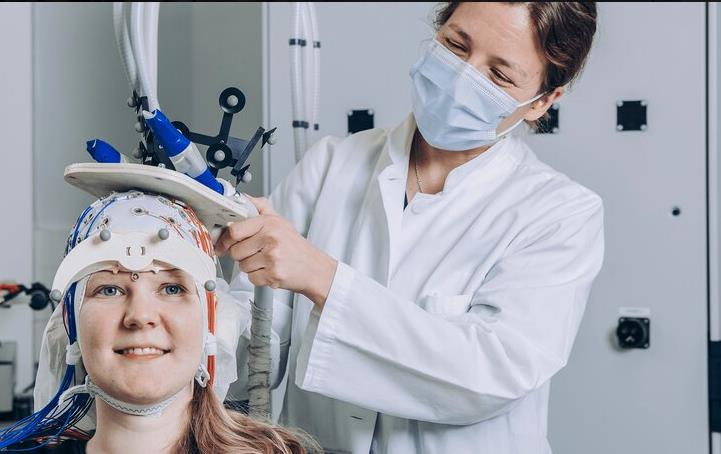美国疼痛协会-经颅磁刺激预防青少年偏头痛的研究说明
发布时间:2022-12-13 11:36:55 来源:本站 点击:890次
目的: 这是一项研究评估单脉冲经颅磁刺激 (sTMS) 预防青少年偏头痛的可行性、耐受性和患者可接受性的实验。
背景: 偏头痛在青少年中很常见,并且可能致残。需要安全有效的,耐受性良好的预防性刺激实验。
方法: 这是一项 STMS 用于 12-17 岁青少年偏头痛预防的前瞻性研究。参与者每天两次使用 sTMS,并根据需要增加额外的脉冲。4 周的基线磨合期(第 1-4 周)之后是 12 周的刺激实验。次要结果包括耐受性和可接受性,以及头痛天数、中度/重度头痛天数、急性药物使用天数以及磨合期(第 1-4 周)和刺激实验的第三个月(第 13-16 周)。

结果: 21 名参与者注册。19 人完成了基线磨合,12 人完成了研究。使用 sTMS 被证明是可行和可接受的,总体依从性很高。最初,为了进行预防性刺激实验,参与者被要求给予 2 次脉冲,等待 15 分钟,然后每天两次额外给予 2 次脉冲。事实证明,这 15 分钟的延迟对青少年来说具有挑战性,尤其是在上学日,因此被取消了。进行此更改后,研究完成率从 4/13 (31%) 变为 7/8 (88%),P = .024。平均而言,参与者在 28 天的时间段内预防性使用该设备的时间为 22 至 24 天。没有严重的不良事件。两名参与者报告使用设备时有轻微不适。
结论: TMS 耐受性良好且可接受的非药物预防青少年偏头痛的刺激实验方法。在设计未来用于青少年偏头痛预防的 STMS 试验时,简化刺激实验管理对于减少辍学至关重要。还需要在更大的试验中进行评估。
原文参考
Samantha L Irwin 1 2, William Qubty 1 2, I Elaine Allen 3, Irene Patniyot 4, Peter J Goadsby 1 2 5, Amy A Gelfand 1 2
Affiliations PMID: 29528485 DOI: 10.1111/head.13284
Objective: To assess the feasibility, tolerability, and patient acceptability of single-pulse transcranial magnetic stimulation (sTMS) for migraine prevention in adolescents in an open-label pilot study.
Background: Migraine is common in adolescents and can be disabling. Well tolerated preventative therapies that are safe and effective are needed.
Methods: This was an open-label prospective pilot feasibility study of sTMS for migraine prevention in adolescents aged 12-17 years. Participants used sTMS twice daily in a preventative fashion, as well as additional pulses as needed acutely. A 4-week baseline run-in period (weeks 1-4) was followed by a 12-week treatment period. Feasibility was the primary outcome. Secondary outcomes included tolerability and acceptability, as well as the change in headache days, number of moderate/severe headache days, days of acute medication use, and PedMIDAS (headache disability) scores between the run-in period (weeks 1-4) and the third month of treatment (weeks 13-16).
Results: Twenty-one participants enrolled. Nineteen completed the baseline run-in, and 12 completed the study. Using sTMS proved feasible and acceptable with overall high compliance once treatment administration was streamlined. Initially, for preventive treatment, participants were asked to give 2 pulses, wait 15 minutes, then give 2 additional pulses twice daily. This 15-minute delay proved challenging for adolescents, particularly on school days, and therefore was dropped. Study completion rate went from 4/13 (31%) to 7/8 (88%) once this change was made, P = .024. On average, participants used the device preventively between 22 and 24 days over a 28-day block. There were no serious adverse events. Two participants reported mild discomfort with device use.
Conclusion: sTMS appears to be a feasible, well-tolerated, and acceptable nonpharmacologic preventive treatment for migraine in adolescents. In designing future trials of sTMS for migraine prevention in adolescents, streamlined treatment administration will be essential to minimize drop-out. Efficacy needs to be assessed in a larger trial.
Keywords: adolescents; headache; migraine; neuromodulation; transcranial magnetic stimulation.